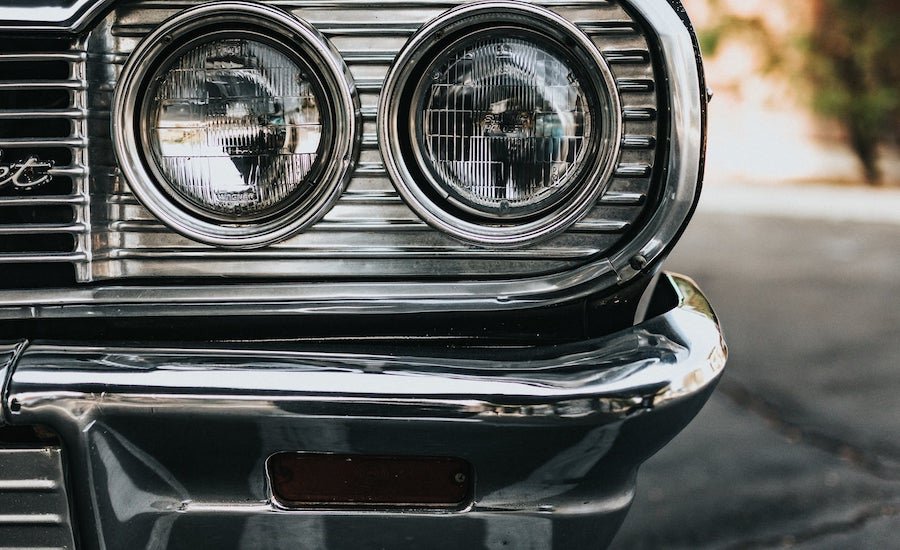California's Latest Ban Will Hit The Classic Car Community Hard

California is on a mission to ban a hazardous chemical that gives chrome its distinctive shine, a move that has angered those working in, and linked to, the car restoration and customization industries across the state.
According to the board item summary from the California Air Resources Board (CARB), it will consider changes to the regulations for chrome plating that would include the phasing out of hexavalent chromium, said to be a toxic air contaminant that poses a health risk to communities living near chrome plating facilities.
Hexavalent chromium has been used for years to create the mirror-like chrome finish found on everything from kitchen faucets to car bumpers. Still, the airborne emissions from the plating process are said to be over 500 times more toxic than diesel exhaust.
CARB's ban would be the first of its kind in the world, and it proposes a ban on chrome-6 in decorative plating by 2027. However, the chemical will still be able to be used for industrial purposes like anti-corrosive coatings by 2039.
"We would be the first jurisdiction in the world to phase out hexavalent chromium in the plating industry," said Jane Williams, executive director of California Communities Against Toxics. "Even the EU hasn't done it because they haven't found a substitute for crucial uses. We would be working with the industry and the military to actually identify new coatings. That's precedent-setting."
Over 110 chrome-plating facilities could be impacted by the ban, with many located in Los Angeles County. This area has the country's highest concentration of chrome platers, catering to the many car enthusiasts and aerospace companies there.
While a high proportion of stock cars were heavily chrome-laden around the 1950s, including many land yachts like the Cadillac DeVille, customer tastes have evolved towards darker, sportier finishes and greater use of materials like carbon fiber.
That doesn't mean that the implementation of shiny chrome on modern cars is dead, however. Classic customized cars and hot rods remain culturally relevant in areas like Southern California, and the potential ban without a practical alternative will undoubtedly be felt.
"California is trying to force something to happen that's not ready to happen," said Bryan Leiker, executive director of the Metal Finishing Assn. of California. "The consequences are going to be disastrous because you can lose an entire industry." Leiker further said that chrome platers make up under 1% of emissions in the state but are the only industry facing a ban. Cement production and lumbar industries, for example, both emit more hexavalent chromium pollution.
CARB will hold a public hearing this week on the matter, and board members will vote on the final proposal in May.
While CARB's move could be seen as extreme in light of the small percentage of emissions, environmental advocates and state regulators are most concerned about the long-term health effects on communities close to chrome plating facilities. If the ban goes through, what does this mean for chrome plating and auto enthusiast industries?
Well, trivalent chromium has been available since the early 1990s and is said to be much less toxic. The problem with it is its darker color which has more in common with stainless steel, thereby losing the high-gloss sheen that is so desired.
"It's a different color, and it just wouldn't look right on these older cars," said Elayne Bendel, who serves on the Lincoln and Continental Owner's Club Western Region board. "It would never match what came out of the factory, let's say, in 1960 or sometime back there."
Although the state Legislature has allocated $10 million annually for the first three years to assist chrome platers with the transition to alternatives should the hexavalent chromium ban be passed, many businesses and jobs will be in jeopardy. Car customizers would also have to source chrome-plated parts with the desired finish from outside the state, adding to their own costs.
As far as automakers themselves go, most shouldn't be affected since there aren't many auto plants based in California. The Tesla Fremont Factory is one major exception, but heavy chrome cladding is not exactly associated with your average Model S or Model 3.
This latest development underlines the hyper-focus on eco-consciousness in California, where it became the first US state to ban the sale of ICE cars from 2035. Although California is easily the biggest market in this country for EV sales, a significant percentage of the population still drive and buy gas-powered vehicles, which stand to be impacted by that ban.
As for chrome-loving car enthusiasts in California, it may be time to start preparing for the worst.
Nouvelles connexes
